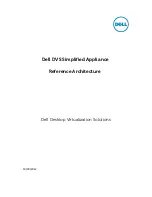
15 Process-Lockstep Operation
The RDF/IMPX products include the process-lockstep operation, which is process-based. That
is, when a process invokes the lockstep operation for a business transaction, the process must
wait until all audit records associated with that business transaction are safely stored in image
trails on the backup system before continuing.
Process-lockstep is not needed with RDF/ZLT because ZLT functionality provides means whereby
no committed data is ever lost during an unplanned outage. Hence, ZLT functionality is a more
efficient means of achieving the same result as process-lockstep. Process-lockstep can be used
with RDF/ZLT, but does not add anything that ZLT functionality does not already provide.
A lockstep operation consists of these steps.
1.
A process starts a business transaction and does database updates.
2.
The process calls endtransaction to commit the work.
3.
The process issues a DoLockstep procedure call.
4.
The DoLockstep procedure communicates with an RDF gateway process.
5.
The gateway starts a lockstep transaction against an RDF lockstep file.
6.
The gateway communicates with the RDF subsystem regarding the lockstep transaction.
7.
The RDF subsystem tells the gateway when lockstep audit has been safely stored on the
backup system.
8.
The gateway returns status to the DoLockstep procedure.
9.
DoLockstep returns status to the process.
Thus, although the business transaction is actually committed on the primary system (and the
file locks or table locks are released), the process cannot continue processing until all of the audit
data associated with that transaction is safely stored in the image trails on the backup system).
While the process waits until DoLockstep completes, other processes can view and modify the
just-changed records, and this must be understood and taken into consideration by the application
designer.
NOTE:
The lockstep capability can be used only for replicating Master Audit Trail (MAT) data.
In addition, the lockstep capability cannot be used in an RDF network environment. Furthermore,
you can have only one RDF subsystem configured for lockstep on a given node because the
gateway can only be configured to a single extractor process.
The RDF/IMPX and RDF/ZLT independent product CDs include these files associated with the
lockstep capability:
Sample code for invoking the DoLockstep procedure from a COBOL 85 program.
SLOCKCOB
RDF lockstep gateway object code.
LSGO
DoLockstep procedure object code.
LSLIBTO
Forward declarations of the DoLockstep procedure call.
FDOLOCK
Starting a Lockstep Operation
Transactions protected by a lockstep operation are begun, performed, and terminated just as any
other transaction: call BeginTransaction, do the necessary database updates, and then call
EndTransaction.
What defines a lockstep operation is the invocation of the new DoLockstep procedure. You issue
the DoLockstep call immediately after the associated EndTransaction call.
Starting a Lockstep Operation
309
Содержание NonStop RDF
Страница 68: ...68 ...
Страница 186: ...186 ...
Страница 260: ...260 ...
Страница 278: ...278 ...
Страница 284: ...284 ...
Страница 290: ...290 ...
Страница 308: ...308 ...
Страница 322: ...322 ...
Страница 336: ...336 ...
Страница 348: ...348 ...
Страница 464: ...464 ...
Страница 478: ......
















































